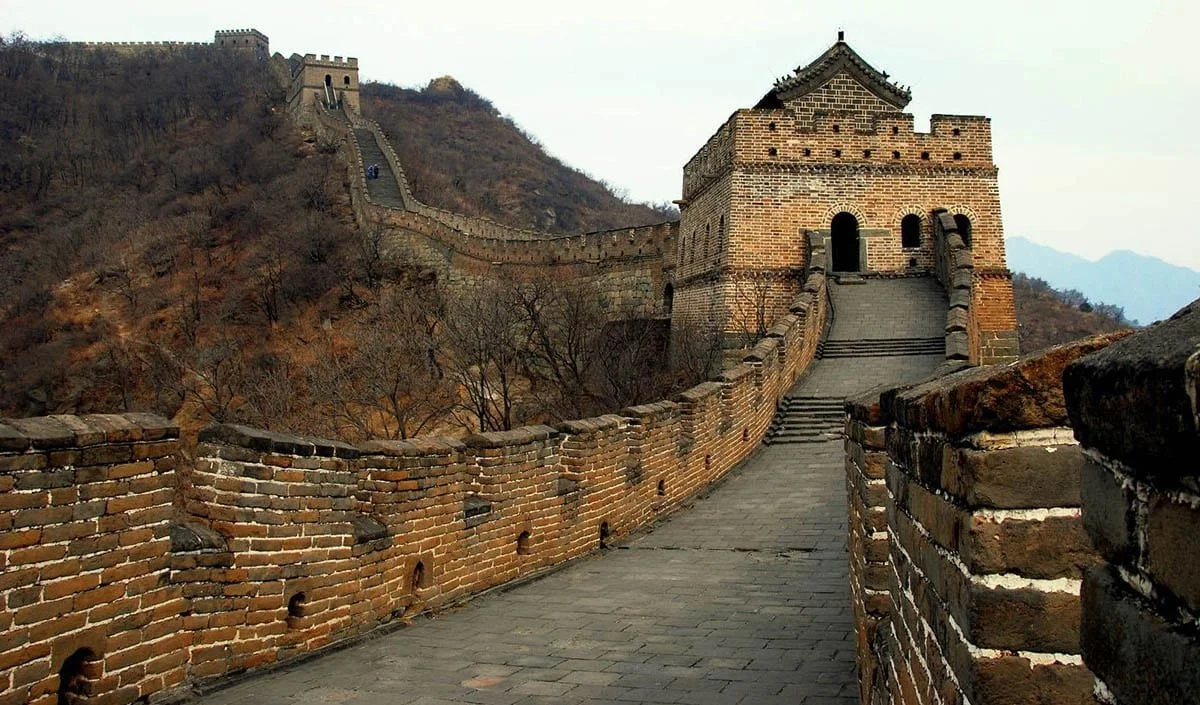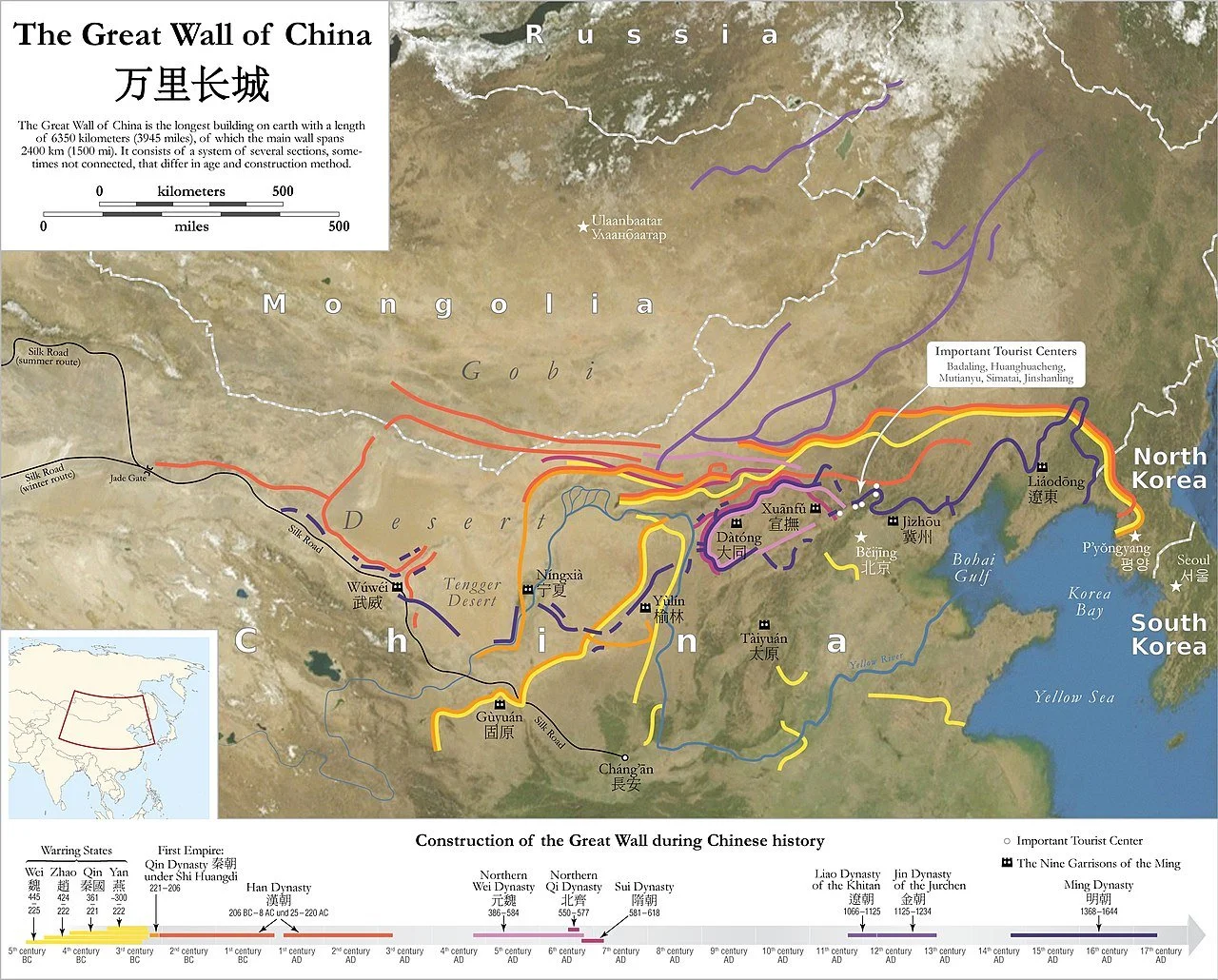The Great Wall of China: History, Mysteries, and Conspiracies
Few monuments in world history inspire awe quite like the Great Wall of China, a colossal structure stretching thousands of miles across northern China. Often referred to as the “longest wall in the world,” it is both a symbol of the ingenuity of ancient Chinese civilizations and a reminder of the human sacrifice required to build such a project. Constructed over centuries by multiple dynasties, the Wall is not just a military fortification but also a cultural and political icon. Beyond its accepted history, however, the Wall has become the center of numerous myths, conspiracies, and unanswered questions that continue to spark curiosity worldwide.
Origins and Construction
The earliest origins of what would later become the Great Wall date back to the 7th century BCE during the Warring States Period, when rival kingdoms built independent walls to guard their territories. These primitive barriers were constructed from tamped earth, wood, and stone, designed to slow down raids by nomadic tribes such as the Xiongnu from the north.
It wasn’t until the reign of Qin Shi Huang, China’s first emperor (221–210 BCE), that the idea of a unified defensive system emerged. Qin ordered the consolidation of existing regional walls into one massive northern line, using forced labor that included soldiers, peasants, and prisoners. This early Wall, though crude by later standards, stretched thousands of miles and required a workforce numbering in the hundreds of thousands. The sheer ambition of the project reflected Qin’s determination to solidify his empire and project power both internally and externally.
Later dynasties, including the Han Dynasty (206 BCE–220 CE), pushed the Wall farther west to protect caravans and secure vital trade along the Silk Road. But the Wall reached its most advanced and iconic form under the Ming Dynasty (1368–1644). The Ming rulers, threatened by Mongol invasions, rebuilt and reinforced the Wall with brick and stone, creating taller and stronger barriers dotted with watchtowers, beacon towers, garrisons, and strategic gates. This version of the Wall is the one most people recognize today, stretching through rugged mountains, deserts, and fertile plains.
Purposes of the Great Wall
While defense was the Great Wall’s central purpose, it served multiple functions beyond military strategy. Militarily, it created a line of fortifications that allowed Chinese forces to monitor enemy movement, repel cavalry raids, and use smoke or fire signals to communicate across enormous distances.
But the Wall also played an important role in economic and political control. It regulated trade routes, most notably the Silk Road, by ensuring tariffs were collected and goods properly recorded. Its checkpoints controlled immigration and emigration, effectively allowing the Chinese state to dictate who could enter or leave. Some historians even argue the Wall served as much to keep people in as to keep enemies out, functioning as a psychological and administrative tool of centralized authority.
Symbolically, the Wall was also a statement of imperial might. Its massive scale intimidated enemies and reassured the population of the emperor’s strength. The structure became a visible boundary between the settled, agrarian societies of China and the nomadic steppe cultures beyond, reinforcing the cultural distinction between “civilization” and “barbarism” in the Chinese worldview.
Conspiracies and Mysteries
As with many monumental structures in history, the Great Wall of China has accumulated layers of myth and conspiracy theories over centuries. While some of these are exaggerations or misunderstandings, others contain kernels of truth.
1. The Myth of Visibility from Space
One of the most enduring myths is that the Great Wall is the only man-made structure visible from space. This claim appeared in textbooks for decades, reinforcing the Wall’s mystique. In reality, astronauts like Neil Armstrong and Buzz Aldrin have stated the Wall is not visible to the naked eye from orbit because it is too narrow and blends into the landscape. However, modern satellites and telescopic imaging can detect sections under certain conditions. The Wall is impressive, but it does not dominate Earth’s surface in the way myths suggest.
2. The “World’s Longest Cemetery”
A darker legend claims the Wall cost over a million lives, with workers buried within its foundations. The story paints the Wall as a mass grave, haunted by the suffering of those who built it. While historical records confirm many workers did die due to exhaustion, malnutrition, accidents, and harsh punishments, archaeologists have not found evidence of large-scale human remains within the Wall itself. Instead, bodies were buried in nearby graves. While the death toll was undoubtedly massive, the claim that the Wall is a literal cemetery is more symbolic than factual—though the suffering behind its construction was very real.
3. Energy Grid Theories
Some fringe theories suggest the Wall was designed as part of an ancient energy grid, channeling spiritual or geomantic power across China. Proponents point to its alignment with mountain ranges and rivers, arguing the builders may have applied principles similar to feng shui to harness natural forces. While mainstream historians dismiss this as pseudoscience, it is true that Chinese architects historically emphasized harmony with nature. The Wall’s placement often followed natural topography, but the evidence suggests this was for military advantage, not mystical energy.
4. Hidden Chambers and Lost Treasure
Folklore speaks of hidden chambers and treasure caches buried within the Wall, especially in sections built under the Ming Dynasty. Some claim generals stashed weapons, food, or even gold in secret compartments. Modern excavations have revealed tunnels, storage rooms, and hidden passages used for military purposes, lending some credibility to the idea of “hidden chambers.” However, there is no archaeological evidence of treasure hoards. These stories may stem from the Wall’s mysterious aura and the fact that so much of it remains unexplored.
5. Did the Wall Fail?
Critics point out that despite its scale, the Wall ultimately failed to prevent invasions. The Mongols under Genghis Khan and later the Manchus both managed to breach or bypass it. The Ming Dynasty itself collapsed in 1644 after the Manchus crossed the Wall through bribery and betrayal rather than brute force. While this fact fuels claims that the Wall was ineffective, historians note that it served its purpose as a deterrent for centuries, slowing enemies and forcing them into predictable points of entry. It was never an impenetrable shield, but rather a strategic obstacle.
6. Built to Keep People In?
Perhaps the most provocative theory is that the Great Wall was not just about keeping invaders out, but about keeping China’s own population under control. By limiting migration, monitoring travel, and imposing state checkpoints, the Wall reinforced the central government’s dominance over its people. This theory gains credibility from historical evidence showing that many checkpoints and gates along the Wall were used to regulate trade, collect taxes, and prevent peasants or deserters from fleeing. In this sense, the Wall was as much about internal power as it was about external defense.
Modern Discoveries and Legacy
With modern technology, researchers continue to uncover new insights about the Wall. Satellite imaging has revealed forgotten sections buried under sand dunes or eroded by time, stretching the known length to over 13,000 miles (21,000 km). Archaeological excavations have discovered pottery, weapons, armor, and even graffiti carved by soldiers who once guarded the frontier. These finds humanize the Wall, reminding us it was not just stone and brick, but a workplace, a home, and often a prison for countless conscripts.
In 1987, UNESCO designated the Great Wall a World Heritage Site, recognizing its cultural and historical significance. Today, millions of tourists visit restored sections near Beijing, such as Badaling and Mutianyu, though large stretches remain in ruins. Despite erosion, vandalism, and modern encroachment, the Wall endures as a symbol of human ambition and perseverance.
Conclusion
The Great Wall of China stands at the crossroads of fact, legend, and imagination. Its true story is one of ambition, sacrifice, and resilience, but the conspiracies and myths surrounding it only add to its aura of mystery. Whether viewed as a military defense, a political tool, or even a mystical energy channel, the Wall continues to fascinate people around the world. Its stones carry not only the history of ancient China but also the echoes of human struggle and the unending quest for security and power.
Sources & Evidence
Britannica: Great Wall of China – History, Length, & Facts
History.com: Great Wall of China
Archaeology Magazine: The Great Wall: New Discoveries



